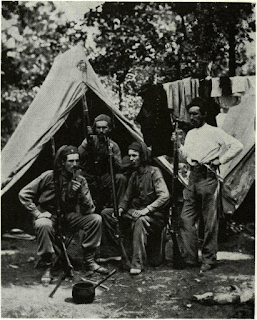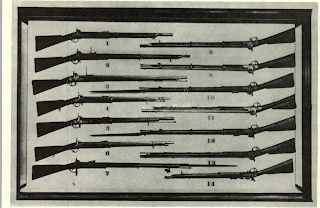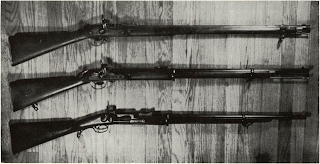Long Enfields of .577 and .58 caliber were issued to United States troops interchangeably with the Springfield rifle musket. In the same squad one might find M Rifled Muskets with M patchboxes, or types, long Enfields, and perhaps a special model from Colt, Lamson, or Amoskeag.
Volunteers by the spring of were being issued Turning out these and more guns for the belligerents
“The high-water mark was reached during the American Civil War,” writes Clive Harris in History
“Some astounding stories of these earnings are related by the ‘old timers.’ £20 a week was considered
“One of the local men (who could have as easily
During -64, North and South were Birming-
Enfields were delivered by many firms, mostly importers in New York. Unlike some who ran around
Buckley & Company, New York, delivered dribs and
Colt delivered a number of Enfields to the United
B. J. Calisher and William Terry, English gunsmith and inventor, perfected a capping breech-loading rifle that was tested in in England for ship’s
Behind the hammer, which is mounted on a lockplate of conventional Enfield form, lies a hinged bar,
Army test guns were caliber .577, rifled Enfield
Jeb Stuart’s “Terry carbine” (most references of the
Deliveries from the following New York firms and
Canning, Durrie & Rusher, Goddard & Brother, and
C. K. Garrison.
Garrison after the War insisted he knew nothing
John Gill, John Hoey, and Howland & Aspinwall—
meaning that no decision of the Commissioners was
Howland & Aspinwall also sold 92 LeFaucheux
Samuel Haskell sold 420 long Enfield rifles $27.50
H. J. Ibbotson sold 2,137 long Enfield rifles on May
5, . Richard Irwin & Company, New York, sold
Philip S. Justice may seem to have had a rough
Charles W. D. Jefferys, New York, sold 1,920 long
J. Kirkpatrick, New York, sold 80 long Enfields,
J. B. Kinsman on January 2 and 13, , delivered a total of 200 “breech-loading rifles” at $40
very high price. To be worth that, they were probably



Comments
Post a Comment